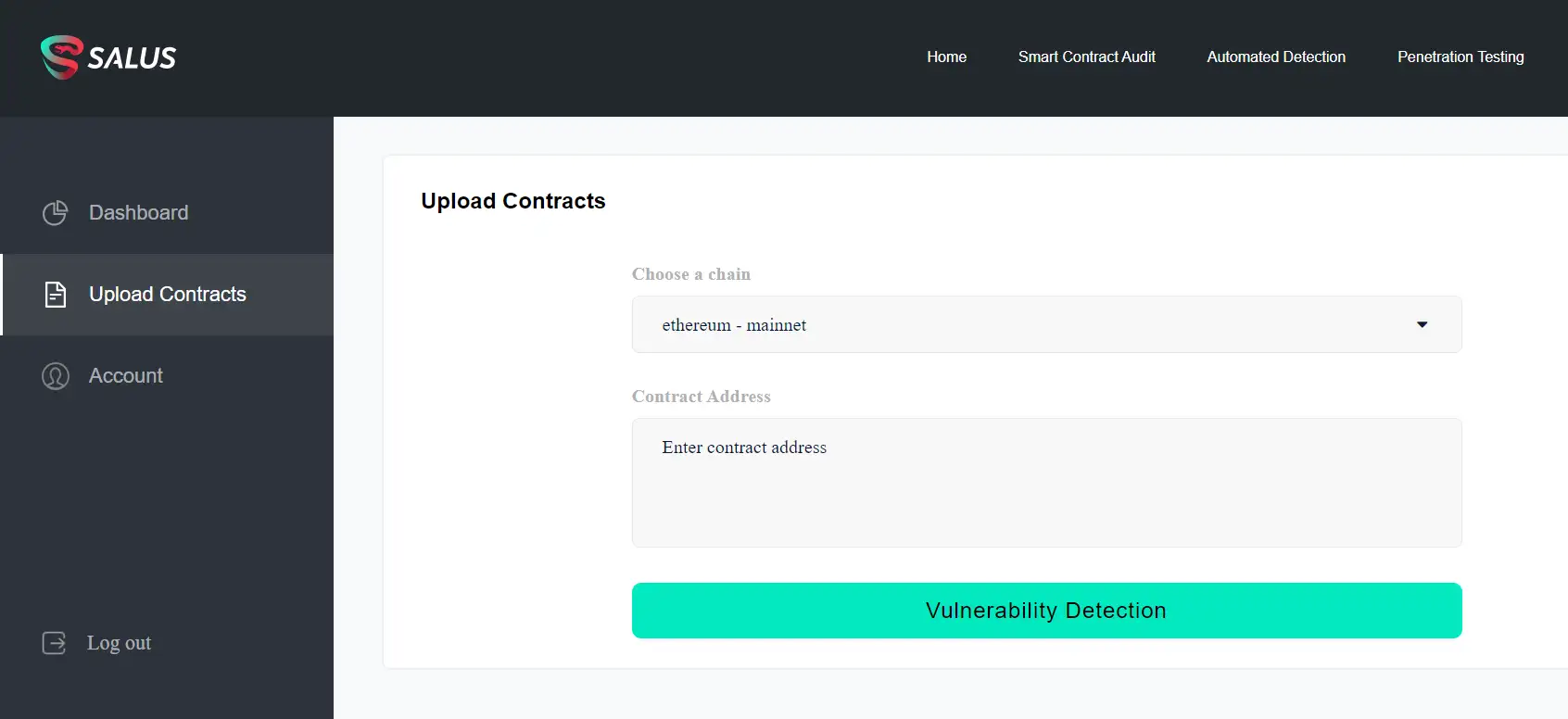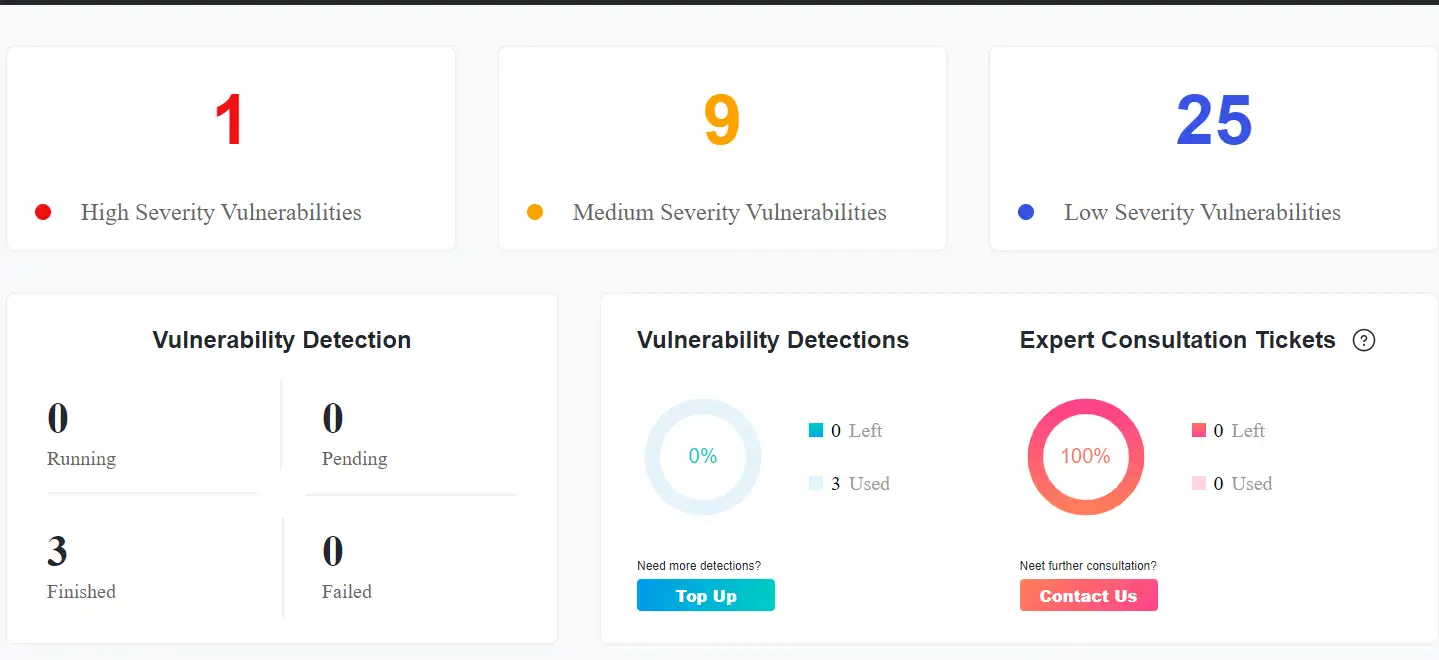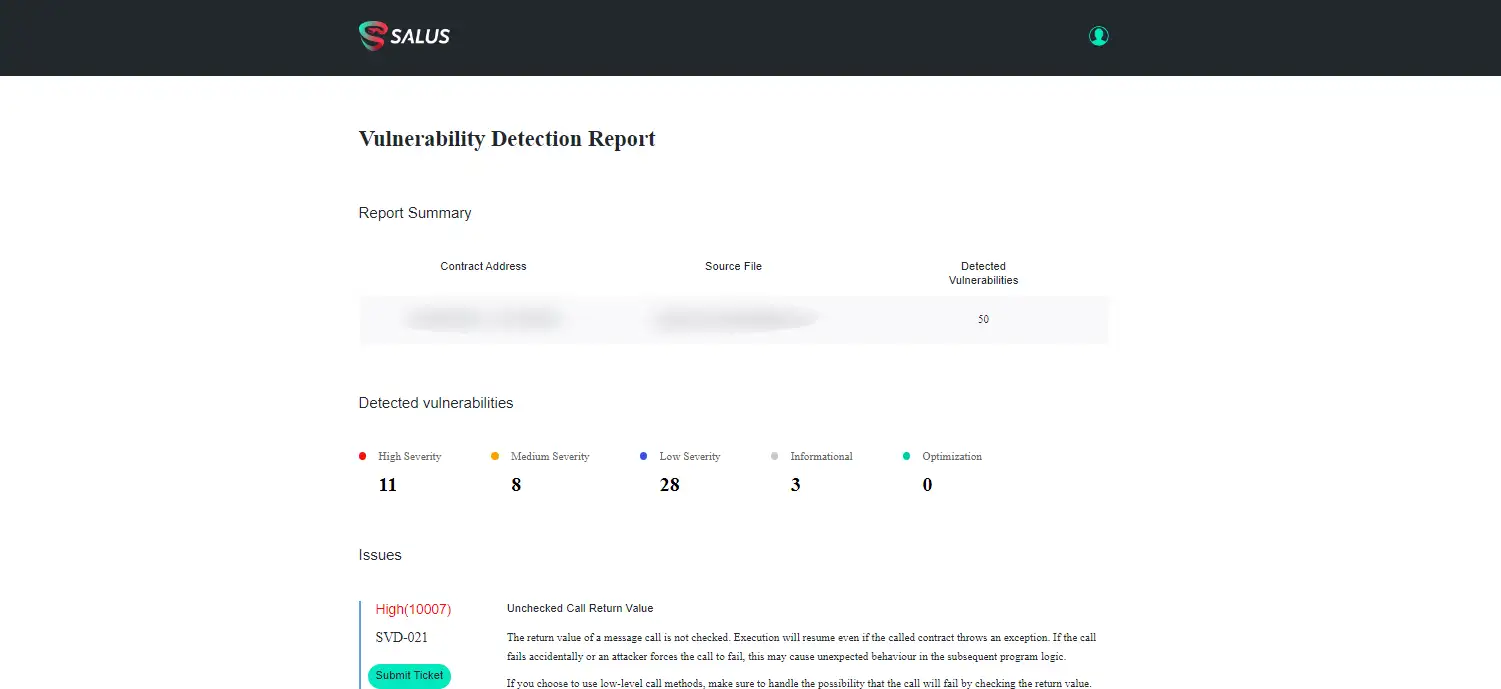About Rapid Detection Tool
The Rapid Detection Tool by Salus Security is a cutting-edge technology designed to revolutionize the process of vulnerability detection in software projects. By integrating seamlessly with existing development environments, this tool aims to provide continuous, real-time monitoring and analysis, identifying potential security flaws as they emerge. The tool is part of Salus Security's broader mission to enhance software security and ensure that businesses can proactively manage risks. With an emphasis on speed and accuracy, the Rapid Detection Tool empowers developers to address vulnerabilities before they can be exploited, safeguarding critical systems and data.
The tool is an embodiment of Salus Security's commitment to proactive security management. It shifts the traditional approach to security from being reactive—where vulnerabilities are addressed after the fact—to being proactive, where potential issues are caught and resolved during the development process. This proactive stance is crucial in reducing the risk of exploitation, minimizing downtime, and maintaining the trust of users. By using cutting-edge algorithms and machine learning, the Rapid Detection Tool is capable of analyzing complex codebases, identifying patterns that may indicate vulnerabilities, and providing actionable insights that developers can use to enhance their code.
The Rapid Detection Tool by Salus Security is designed to meet the growing demands of modern software development by providing an advanced, automated solution for vulnerability detection. The tool’s primary objective is to ensure that security is seamlessly integrated into the development process, thus helping organizations to preemptively manage risks associated with software vulnerabilities.
The development of the Rapid Detection Tool was driven by the recognition that traditional security practices often lag behind the fast-paced nature of modern software development. As continuous integration and continuous deployment (CI/CD) pipelines become the norm, there is an increasing need for security tools that can keep pace with these rapid development cycles. The Rapid Detection Tool addresses this need by offering a real-time scanning solution that can be integrated directly into CI/CD workflows, allowing for continuous monitoring of code as it is written and deployed.
A key milestone in the development of this tool was its ability to support a wide range of programming languages and development environments. This versatility is critical because it allows teams to use the tool regardless of the technologies they are working with. Another significant advancement was the incorporation of machine learning algorithms, which enable the tool to adapt to new threats by learning from patterns and trends in the code it analyzes.
The Rapid Detection Tool is also designed with scalability in mind, making it suitable for both small teams and large enterprises. Whether it's used by a single developer or a global development team, the tool provides consistent and reliable security analysis. Its customizable alert system allows users to set thresholds for different types of vulnerabilities, ensuring that they are only notified about the issues that matter most to their project.
Additionally, the tool offers comprehensive reporting features that allow developers and security teams to gain deep insights into the security posture of their projects. These reports can be used not only to fix current issues but also to inform future development practices, thereby continuously improving the security of the software.
Competitors in the vulnerability detection space include established tools like SonarQube, Snyk, and Veracode, each offering their own unique features and benefits. However, the Rapid Detection Tool distinguishes itself through its emphasis on real-time detection and its seamless integration with CI/CD pipelines. This makes it particularly well-suited for modern development environments where speed and agility are paramount.
Overall, the Rapid Detection Tool represents a significant evolution in how software security is approached, shifting the focus from reactive to proactive measures. By integrating security directly into the development process, it helps organizations to build more secure software from the outset, reducing the likelihood of costly breaches and maintaining the trust of their users.
The Rapid Detection Tool offers several key benefits and features that set it apart from other security tools on the market:
- Real-Time Vulnerability Detection: The tool continuously scans the codebase in real-time, detecting potential security flaws as they are introduced. This immediate feedback allows developers to address issues before they are committed to the repository, significantly reducing the risk of vulnerabilities reaching production.
- Seamless Integration with CI/CD Pipelines: One of the tool’s standout features is its ability to integrate smoothly with existing CI/CD pipelines. This integration ensures that security checks are part of the natural flow of the development process, minimizing disruption and enhancing overall productivity.
- Comprehensive Coverage Across Multiple Languages: The tool supports a wide range of programming languages and environments, making it versatile and suitable for diverse development teams. Whether working with legacy code or the latest technologies, the tool can provide thorough security analysis.
- Machine Learning-Driven Insights: Leveraging machine learning, the tool continuously improves its detection capabilities by learning from the data it processes. This results in more accurate identification of vulnerabilities, including those that may be overlooked by traditional rule-based systems.
- Customizable Alerts and Reporting: Users can configure the tool to generate alerts based on specific criteria, such as the severity or type of vulnerability. Additionally, the tool can produce detailed reports that offer insights into the security posture of a project, helping teams to prioritize their efforts and make informed decisions.
- Scalability for Different Team Sizes: The tool is designed to scale with the needs of the user, whether it’s a small team or a large enterprise. This flexibility ensures that the tool remains effective regardless of the project's size or complexity.
- Enhanced Developer Productivity: By integrating security into the development process, the tool helps to reduce the time and effort required to manage vulnerabilities. This allows developers to focus more on building features and less on addressing security issues post-deployment.
- Support for Compliance and Governance: The tool’s comprehensive reporting features make it easier for organizations to comply with security standards and regulations. It provides the necessary documentation and insights required for audits and governance, ensuring that projects meet industry requirements.
- Sign Up and Access: Begin by visiting the Salus Security website and creating an account. Once registered, log in to the dashboard where you can access the Rapid Detection Tool. If your organization has multiple teams, you may want to set up separate accounts or workspaces for each team.
- Integration with CI/CD Pipelines: The tool is designed to integrate seamlessly with various CI/CD platforms such as Jenkins, GitLab, and CircleCI. Follow the provided documentation to add the Rapid Detection Tool to your pipeline. This typically involves installing a plugin or adding a script to your CI configuration file.
- Initial Configuration: Customize the tool settings according to your project’s needs. This includes setting up alerts for different types of vulnerabilities, choosing the programming languages you want to scan, and defining the scope of each scan. For larger projects, it may be beneficial to configure the tool to scan specific directories or modules to manage performance.
- Running Your First Scan: Initiate your first scan to create a baseline for your project’s security posture. The tool will analyze your code and generate a report highlighting any detected vulnerabilities. Review this report carefully and prioritize the most critical issues for immediate attention.
- Continuous Monitoring Setup: Enable continuous monitoring to ensure that every change to your codebase is automatically scanned for vulnerabilities. This setup allows the tool to provide real-time feedback on new code, helping to catch issues as they are introduced.
- Reviewing and Acting on Reports: Regularly review the security reports generated by the tool. These reports will provide insights into recurring issues, trends in your codebase, and areas that require improvement. Use these reports to guide your security strategy and inform your development practices.
- Ongoing Maintenance and Updates: As your project evolves, it’s important to keep the Rapid Detection Tool up-to-date. Regularly check for updates to the tool itself and adjust your configuration as needed to accommodate new features or changes in your development environment.
- Training and Best Practices: Finally, consider providing training for your development team on how to best utilize the tool. Ensuring that all team members understand how to interpret and act on the tool’s findings is crucial for maintaining a secure development process.
Rapid Detection Tool Reviews by Real Users
Rapid Detection Tool FAQ
The Rapid Detection Tool integrates seamlessly into the development process, providing real-time feedback on code vulnerabilities. This immediate insight allows developers to address issues quickly, reducing time spent on manual security reviews and post-deployment fixes. By catching problems early, it enables teams to focus more on developing features rather than dealing with security patches.
Yes, the Rapid Detection Tool is equipped to scan and analyze third-party libraries used within your codebase. It detects known vulnerabilities in these libraries and provides recommendations for safer alternatives or necessary updates, ensuring your project remains secure.
The machine learning algorithms in the Rapid Detection Tool allow it to continuously learn from the code it scans. This enables the tool to recognize emerging patterns and vulnerabilities that might be missed by traditional methods, making it increasingly effective over time.
While tools like SonarQube and Snyk offer strong security features, the Rapid Detection Tool excels in its real-time vulnerability detection and deep integration with CI/CD pipelines. It provides immediate feedback, which helps developers fix issues during the development process rather than post-deployment.
Yes, the Rapid Detection Tool is highly scalable and can handle the complex needs of large-scale enterprises. It supports a wide range of programming languages and environments, making it a versatile choice for organizations with diverse development teams and extensive codebases.
You Might Also Like












